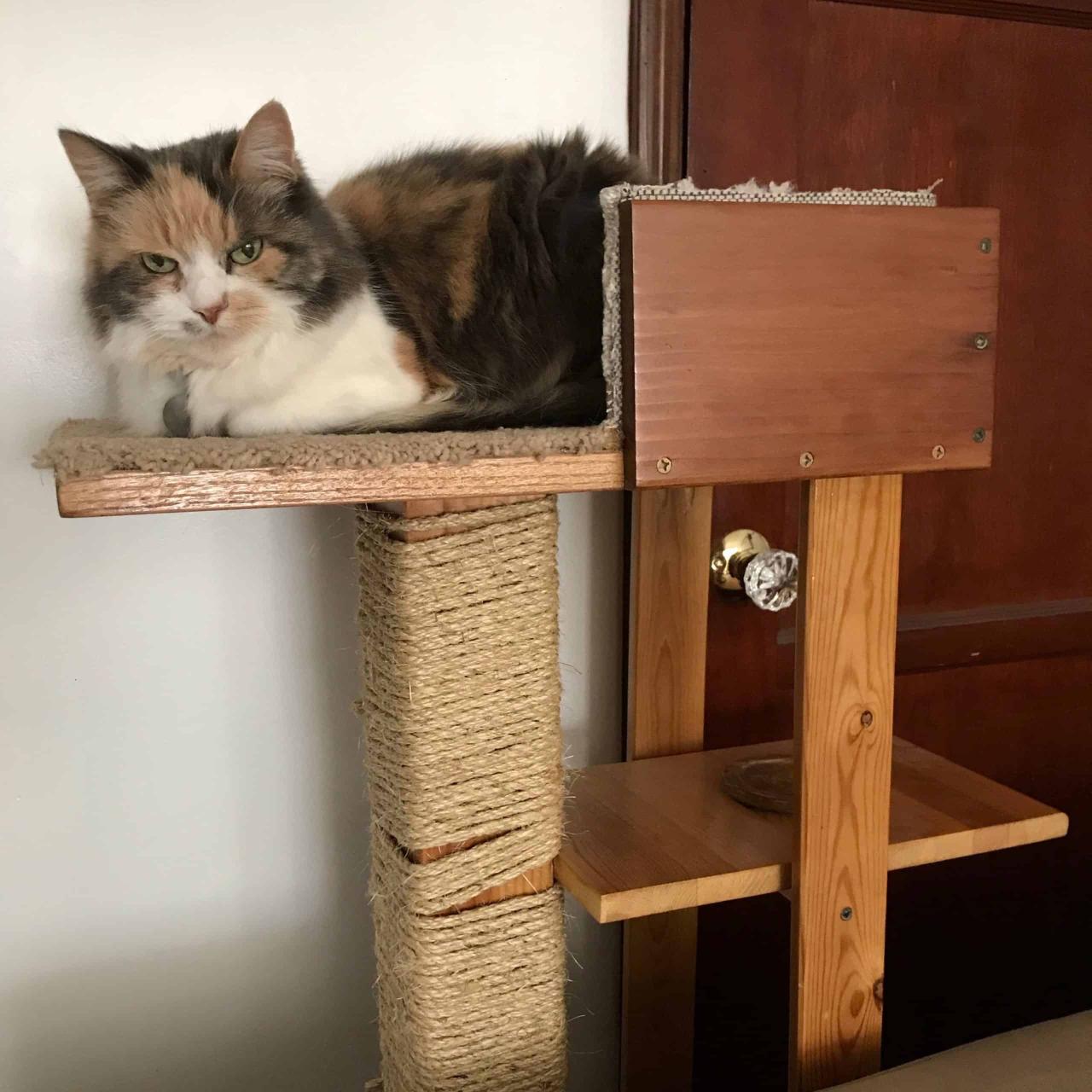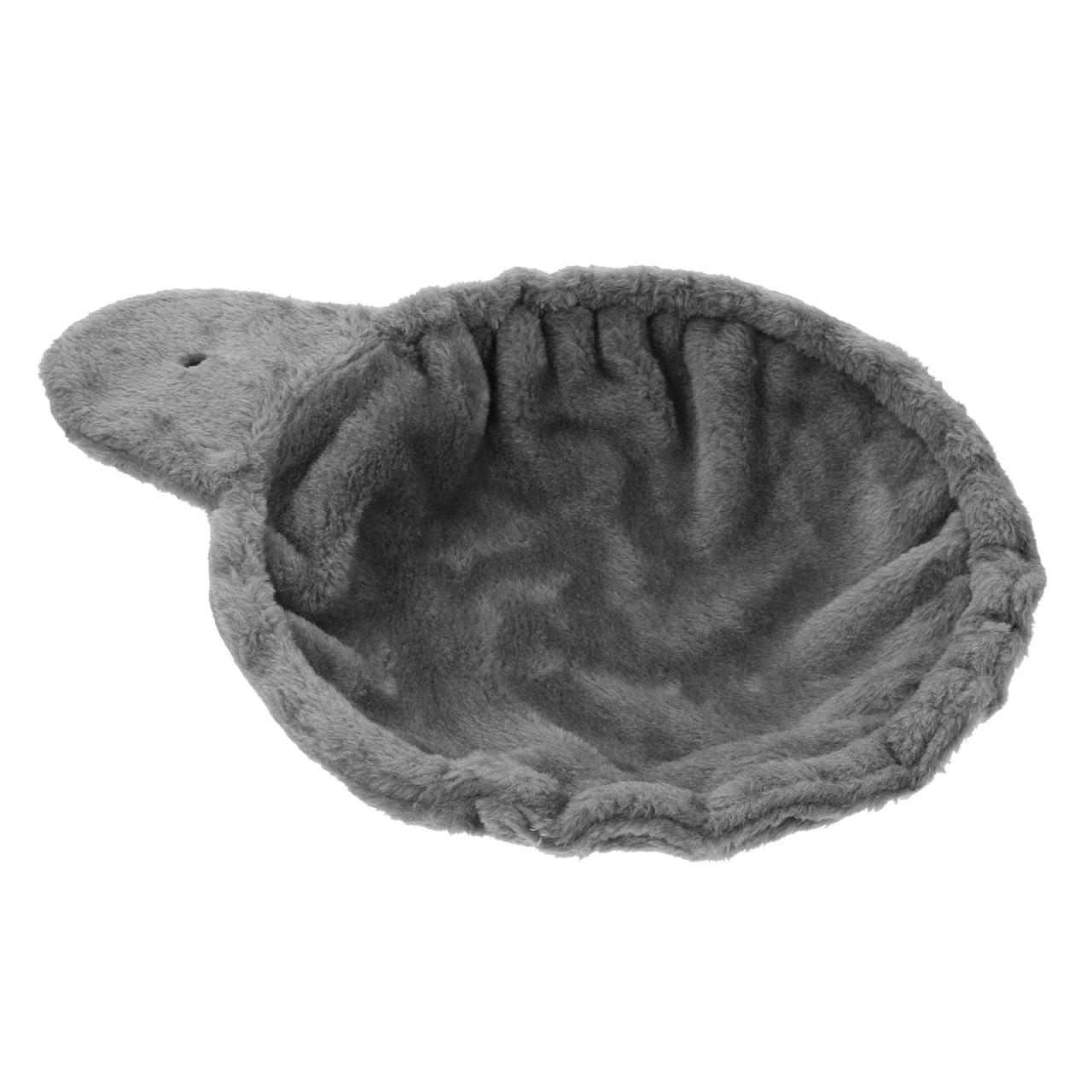DIY cat tree sets the stage for a rewarding project, offering your feline friend a customized haven while showcasing your crafting skills. Building a DIY cat tree provides a unique opportunity to create a structure tailored to your cat’s personality and your home’s aesthetic.
From choosing the right materials to designing a layout that encourages climbing and play, this guide equips you with the knowledge and inspiration to build a cat tree that your cat will adore. You’ll learn about different design considerations, explore various climbing structures, and discover fun features that add a touch of whimsy to your cat’s new playground.
Adding Climbing Structures

Climbing structures are essential for a cat tree, providing opportunities for exercise, scratching, and exploration. They add verticality and complexity to the tree, keeping your feline friend engaged and entertained.
Sisal Rope Posts
Sisal rope posts are a classic climbing structure for cat trees. They offer a natural and textured surface that cats love to scratch on. The rough texture helps to maintain their claws and provides a satisfying sensory experience.
Sisal rope posts can be attached to platforms using various methods:
* Directly screwing: You can screw the post directly into the platform using wood screws. Ensure the screws are long enough to secure the post firmly.
* Using a metal bracket: A metal bracket can be attached to the platform, and the post can be inserted into the bracket. This method provides a more secure attachment and allows for easy removal if needed.
* Using a threaded rod: A threaded rod can be passed through the platform and post, and secured with nuts on both sides. This method provides a very strong and stable attachment.
Scratching Posts
Scratching posts are another popular climbing structure for cat trees. They can be made from various materials, including sisal rope, cardboard, and wood.
Scratching posts can be attached to platforms using similar methods as sisal rope posts:
* Directly screwing: You can screw the post directly into the platform using wood screws. Ensure the screws are long enough to secure the post firmly.
* Using a metal bracket: A metal bracket can be attached to the platform, and the post can be inserted into the bracket. This method provides a more secure attachment and allows for easy removal if needed.
* Using a threaded rod: A threaded rod can be passed through the platform and post, and secured with nuts on both sides. This method provides a very strong and stable attachment.
Ladders
Ladders can be a fun and challenging climbing structure for cats. They provide a different type of climbing experience compared to posts and can be used to connect different levels of the cat tree.
Ladders can be made from various materials, such as wood, rope, or metal. They can be attached to platforms using:
* Screws: You can screw the ladder directly into the platform using wood screws. Ensure the screws are long enough to secure the ladder firmly.
* Metal brackets: Metal brackets can be attached to the platform, and the ladder can be inserted into the brackets. This method provides a more secure attachment and allows for easy removal if needed.
* Using a threaded rod: A threaded rod can be passed through the platform and ladder, and secured with nuts on both sides. This method provides a very strong and stable attachment.
Designing a Climbing Structure
To encourage exploration and play, consider designing a climbing structure with varying textures and heights:
* Varying textures: Use different materials for climbing structures, such as sisal rope, wood, and carpet. This will provide a variety of textures for cats to explore.
* Varying heights: Create different levels on the cat tree using platforms and climbing structures. This will allow cats to climb to different heights and explore their surroundings from different perspectives.
* Consider a cat’s natural instincts: Cats are naturally curious and love to climb. Design the climbing structure with this in mind, providing opportunities for exploration and play.
Incorporating Fun Features: Diy Cat Tree
A cat tree is more than just a scratching post and climbing structure; it’s a playground for your feline friend. Adding fun features to your DIY cat tree can transform it into a captivating space that encourages exploration, play, and relaxation.
Fun Features to Add
These features add an element of intrigue and enjoyment to your cat tree:
- Hammocks: Hammocks provide a cozy and elevated resting spot. You can create a hammock using sturdy fabric, rope, or even a piece of sturdy mesh. Secure the hammock to the cat tree using strong hooks or straps.
- Tunnels: Tunnels offer a sense of security and adventure. You can create a tunnel using cardboard boxes, PVC pipes, or even fabric tubes. Attach the tunnel to the cat tree using zip ties or strong adhesive.
- Toys: Incorporate interactive toys that encourage play. You can hang dangling toys, feather wands, or even small balls from the cat tree. Use sturdy cords or chains to prevent your cat from chewing on the attachment.
Interactive Elements, Diy cat tree
Interactive elements can keep your cat engaged and entertained for hours:
- Scratching Posts: Include scratching posts of various textures and heights to satisfy your cat’s natural scratching instincts.
- Climbing Structures: Offer a variety of climbing structures, such as platforms, ladders, and ramps, to challenge your cat’s agility.
- Perches: Create perches at different heights, allowing your cat to survey their domain from various vantage points.
- Hiding Spots: Include enclosed spaces, such as boxes or caves, for your cat to hide and feel secure.
Safety and Maintenance
A sturdy and well-maintained cat tree is essential for your feline friend’s safety and enjoyment. Here’s a comprehensive guide to ensure your DIY cat tree is safe and lasts for years.
Safety Considerations
Prioritizing safety is paramount when building a cat tree. Carefully consider these factors to prevent accidents and ensure your cat’s well-being:
- Secure Base: A wide, heavy base is crucial for stability, preventing the tree from tipping over, especially if your cat enjoys jumping or playing. Consider using a solid wood base or adding weights for extra stability.
- Strong Materials: Opt for sturdy materials like plywood, solid wood, or metal for the frame. Avoid using fragile materials like particleboard or MDF, which can easily break or splinter.
- Sharp Edges and Corners: Round off all sharp edges and corners with sandpaper to prevent scratches or injuries to your cat. This is particularly important for platforms and perches.
- Secure Fasteners: Use high-quality screws, bolts, and nuts to assemble the cat tree. Ensure they are properly tightened and secure to prevent parts from loosening or falling apart.
- Climbing Surfaces: Choose materials that provide good grip for your cat’s claws. Natural sisal rope is a popular choice, while carpet or textured fabric can also be used. Avoid smooth surfaces that might make climbing difficult or slippery.
- Weight Capacity: Consider the weight of your cat and ensure the platforms and perches can support it. If you have multiple cats, ensure the tree can handle their combined weight.
- Placement: Place the cat tree in a safe location away from sharp objects, furniture corners, and other hazards. Ensure it is stable and won’t be knocked over by furniture or other objects.
Maintenance Tips
Regular maintenance is key to extending the life of your cat tree and ensuring its safety. Here are some essential tips:
- Inspect Regularly: Check the cat tree regularly for signs of wear and tear, including loose screws, frayed rope, or damaged fabric. Address any issues promptly to prevent accidents.
- Clean Regularly: Cat trees can accumulate dust, fur, and other debris. Clean the platforms and perches regularly with a damp cloth and mild detergent. Vacuum the sisal rope to remove accumulated fur.
- Replace Worn Parts: If any parts of the cat tree become worn or damaged, replace them immediately. This includes replacing frayed sisal rope, torn fabric, or loose screws.
- Re-secure Fasteners: Over time, screws and bolts can loosen. Periodically check and re-tighten them to ensure the cat tree remains structurally sound.
Safety Checklist
Before allowing your cat to use the DIY cat tree, perform a thorough safety inspection using this checklist:
- Stability: Test the stability of the cat tree by gently shaking it. Ensure it is firmly anchored to the ground and doesn’t wobble or tip over.
- Climbing Surfaces: Inspect the climbing surfaces for loose threads, frayed ropes, or sharp edges. Ensure they provide a secure grip for your cat’s claws.
- Platforms and Perches: Check the platforms and perches for cracks, splinters, or loose fasteners. Ensure they are strong enough to support your cat’s weight.
- Fasteners: Examine all screws, bolts, and nuts to ensure they are securely fastened. Tighten any loose fasteners.
- Placement: Ensure the cat tree is placed in a safe location away from hazards.
End of Discussion

With careful planning and a dash of creativity, you can construct a sturdy, stylish, and safe DIY cat tree that will provide your cat with endless hours of entertainment. From the base to the platforms, each step in the building process is an opportunity to personalize the structure and cater to your cat’s individual needs and preferences. As you watch your cat explore their new domain, you’ll experience the joy of creating something special that brings both you and your furry companion immense satisfaction.